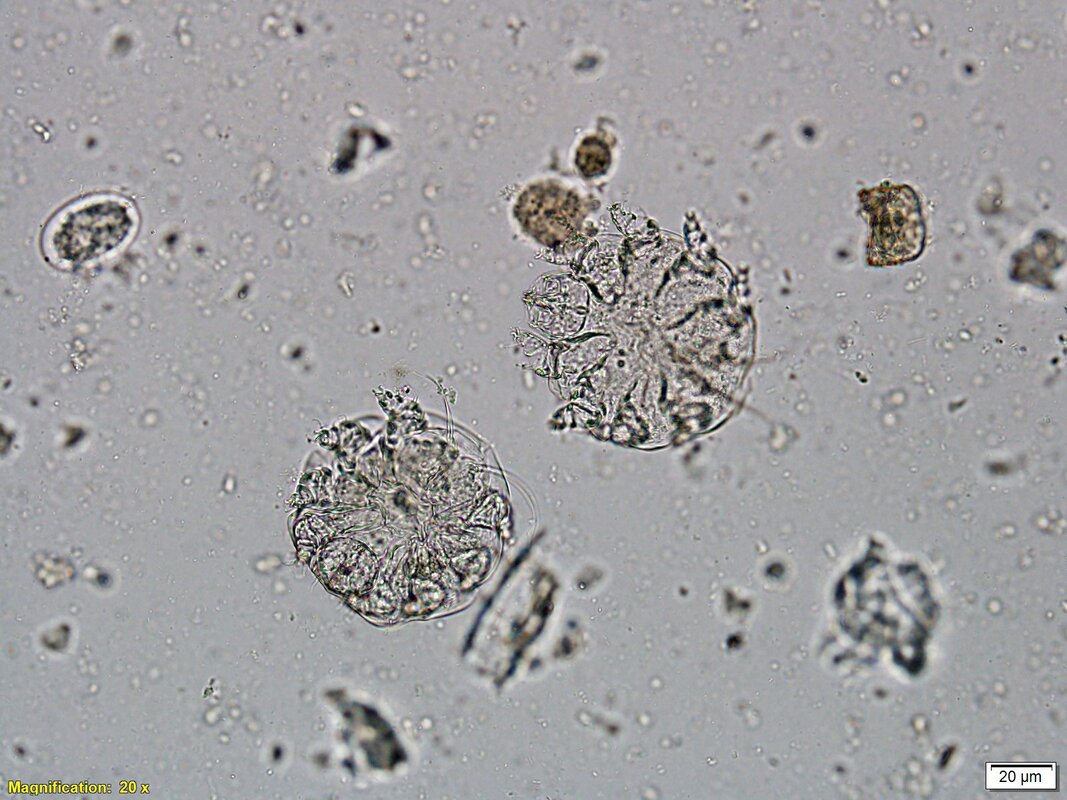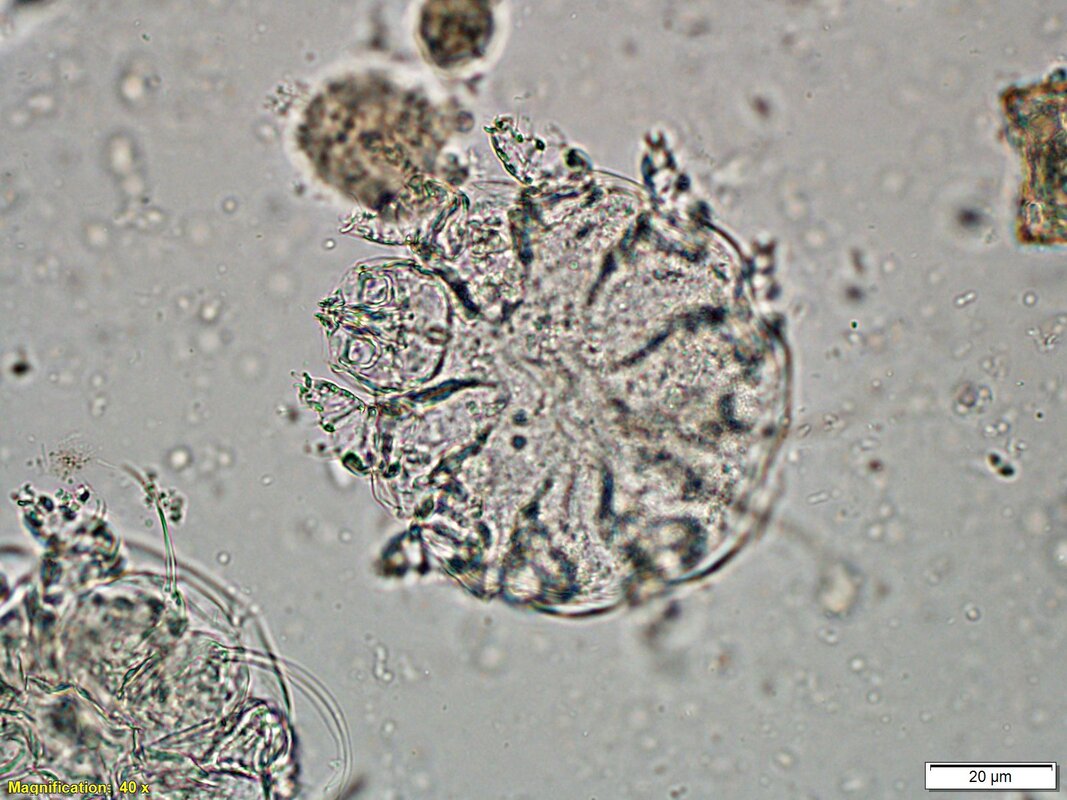Why did the snake cross the road?A juvenile, rat snake was brought to a wildlife rescue in Oklahoma after being hit by a car. Due to poor prognosis, the snake was euthanized and sent to necropsy. Necropsy revealed a severe spinal fracture, which most likely occurred during the accident. Also, three partially digested mice were recovered from the gastrointestinal tract. A fecal sample from the snake was sent to the parasitology diagnostic lab, and a centrifugal fecal flotation was performed with Sheather’s sugar solution (specific gravity, 1.25). The following organisms were observed. Figure 1: 200x magnification Figure 2: 400x magnification Psorobia (= Psorergates) simplex mites. Psorobia simplex is also known as the “follicle mite of mice.” This is a small, round mite, and both adults and nymphs have four pairs of legs. Each tarsus terminates in a pair of simple claws and a pad-like empodium. Natural hosts for this parasite are mice, although infestation of laboratory mice is now extremely rare. Infestation of mice with P. simplex is characterized by formation of small, distended, white-colored, nodules in the skin. These nodules are thought to form as a result of epidermal growth to accommodate internal pressure of space-occupying mites. All life stages of the mite are found inside these nodules. In this case, these mites were found in the snake as a spurious parasite – The snake ate the mice, and the mites were just passing through the GI tract of the snake. Reference Baker. Flynn’s Parasites of Laboratory animals, 2nd ed. Pages 366-367. |
Archives
July 2024
Have feedback on the cases or a special case you would like to share? Please email us ([email protected]). We will appropriately credit all submittors for any cases and photos provided.
|


